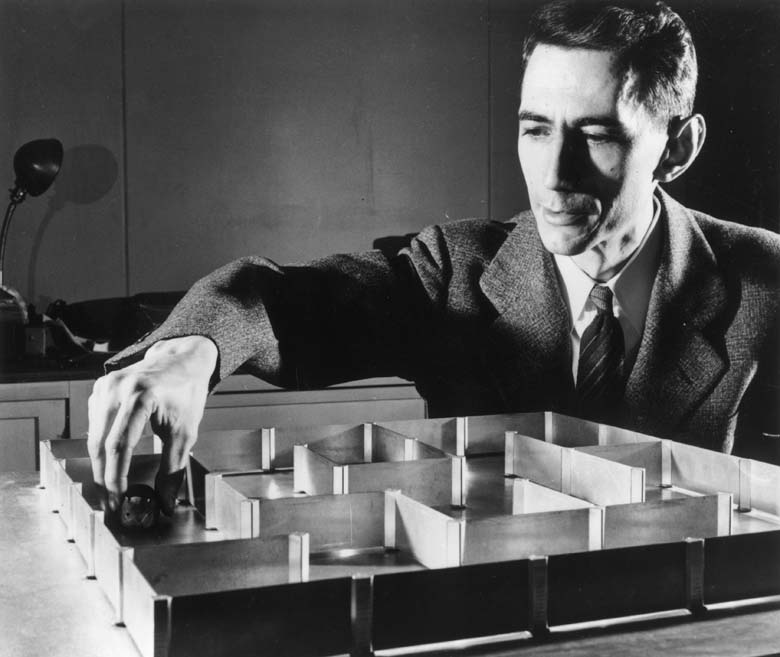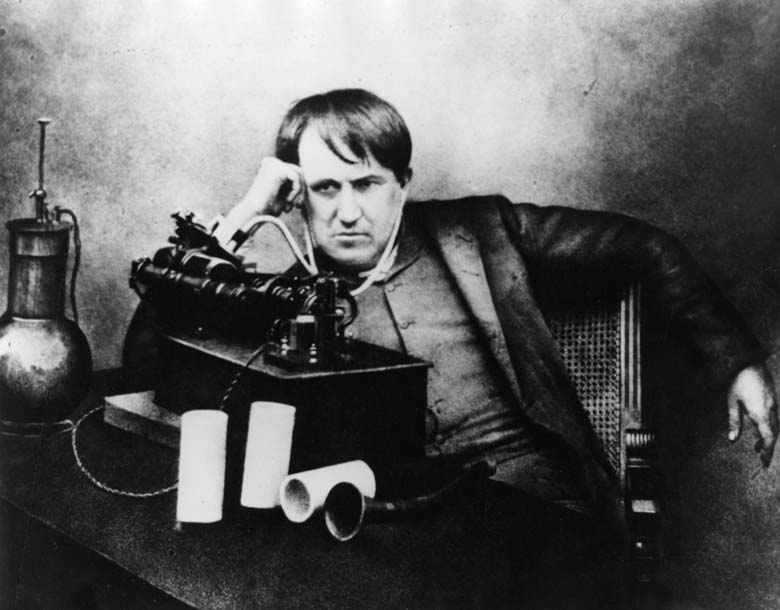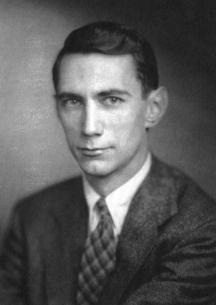
Claude Shannon pictured in May 1952. (Getty)
The man you’re looking at on Google’s homepage on April 30 is the person responsible for electronic computing. The Google Doodle celebrates Dr. Claude Shannon’s 100th birthday. The famed Michigan-born scientist and mathematician passed away in 2001. It’s Shannon’s Master’s thesis that’s considered the “foundation of electronic computing,” according to Google’s celebration of the World War II hero. On the military front, Shannon was renowned for creating the first unbreakable cipher, an uncrackable code.
The April 30 doodle celebrates not only shows Shannon’s achievements but his playful side as it shows him juggling. Among his less vital contributions to science and humanity, were Shannon’s flame-throwing trumpet and his rocket frisbee.
Here’s what you need to know:
1. His Hero Was Thomas Edison & He Later Learned the Pair Were Distant Cousins

Thomas Edison pictured in 1871. (Getty)
Shannon was born in the town of Petoskey in Michigan on April 30, 1916. He was raised in the town of Gaylord. The two areas are separated by about 30 miles. His mother was the principal of Gaylord High School, where he graduated from in 1932.
These days there’s a Claude Shannon Park located in downtown Gaylord.
Outside of his school, Shannon built mechanical things such as toys and devices in his youth. He idolized Thomas Edison. During his high school years, Shannon worked as a messenger for Western Union, the money transferring company.

(Wikipedia)
Later, Shannon would learn that he and Edison were distant cousins, connected through John Ogden, an early settler in New Jersey, according to his Massachusetts Institute of Technology obituary.
A New York University tribute to Shannon notes that his biggest familial influence was his grandfather who was an inventor and farmer. In the book Fortune’s Formula it says that Shannon’s grandfather invented an “automatic washing machine.”
2. After Becoming a Research Fellow at Princeton in 1940; Shannon Rubbed Shoulders With Albert Einstein

(Getty)
In a March 2015 tribute piece on the University of Michigan website, it’s written that Shannon entered the college in the fall of 1932. He would graduate in 1936 with degrees in electrical engineering and one in mathematics.
Another of his alma-maters, MIT, wrote upon Shannon’s passing in 2001 that he entered the famed technical college in 1939. It’s there he wrote his thesis, A Symbolic Analysis of Relay and Switching Circuits. Psychologist Howard Gardner called Shannon’s work “possibly the most important, and also the most famous, master’s thesis of the century,” in his 2008 book The Mind’s New Science.

(Google Doodle)
Essentially, the thesis showed that George Boole’s 19th-century algebra could be used in computers.
The dissertation would earn Shannon the Alfred Noble American Institute of American Engineers Award in 1939. It begins with the words, “The fundamental problem of communication is that of reproducing at one point either exactly or approximately a message selected at another point.”
Shannon’s college advisor was computer pioneer Vannevar Bush, who invented an “analog computer called the differential analyzer,” according to the Scientific American.
An MIT professor, Robert Gallager, added in the obit, “Nobody had come close to this idea before. This was not something somebody else would have done for a very long time.”
It’s the diagrams used in the final chapter of the thesis, which showed different types of circuits, that contained the central circuit that is still used in digital computers. The circuit is the 4-bit full adder.
After receiving his PhD from MIT, Shannon became a research fellow at Princeton in New Jersey where he rubbed shoulders with Albert Einstein and Kurt Godel.
He would go on to win the National Medal of Science and Kyoto Prize for Basic Science during his scientific career.
3. He Met His Wife Betty During World War II While the Pair Were Both Working at Bell Labs
During America’s entry into World War II in 1941, Shannon joined Bell Labs. It was there that he met his wife, Betty, though the couple wouldn’t marry until March 27, 1949.
The Scientific American wrote in their tribute to Shannon that he worked on his theories about information and communications in private while at Bell Labs.
Shannon worked at this time with British cryptographer Alan Turing. At the conclusion of the war, Shannon published his findings in cryptography as it relates to communication theory. His paper was titled A Mathematical Theory of Cryptography and is where Shannon became the first person to ever use the word “bit” to mean binary digit, according to the Scientific American.
It featured the process of his uncovering an unbreakable cipher. A New York University tribute to Shannon describes his work at Bell as “he formulated a theory explaining the communication of information and worked on the problem of most efficiently transmitting information.”
It’s said in his obituary that he left Bell Labs in 1972. An AT&T fellow, Neil Sloane, said about Shannon, “He’s one of the great men of the century. Without him, none of the things we know today would exist. The whole digital revolution started with him.
4. Shannon Built a Device That Could Solve a Rubix Cube as Well as Improve a Person’s Odds at Roulette
Among Shannon’s more frivolous inventions, ones that didn’t contribute to the fall of Adolf Hitler; were things such as his mechanical mouse that could navigate a maze. You can watch the robotic rodent at work above.

(Wikipedia)
He also created a machine that could solve a Rubix cube and a device that could help a person’s odds at roulette. A 2005 article in the American Scientist reported that Shannon and his wife were regular visitors to Las Vegas. They were often accompanied by MIT mathematician Ed Thorp. There, Shannon would apply his mathematician skills to blackjack. This technique would eventually become the premise for the book Bringing Down the House and the movie 21.
While in his personal life, Shannon loved to juggle, hence the doodle and ride his unicycle, all in a day’s work for an amazing scientist.
The Scientific American says that Shannon was known to love to cycle his unicycle and juggle while at Bell Labs. You can see photos of him doing this here.
5. His Eldest Son Robert Preceded Shannon in Death in 1998
In his later years, Shannon suffered from Alzheimer’s disease and passed away in a nursing home in Medford, Massachusetts. Shannon’s New York University tribute says that he lived most of his life close to MIT in a “house is filled with musical instruments such as five pianos and 30 other instruments, from piccolos to trumpets.”
Professor Arthur Lewbel wrote in March 2001 that Shannon’s home had previously belonged to Thomas Jefferson’s great-granddaughter. Lewbel adds that Shannon never cared about money but was wealthy after early investments in Hewlett Packard and Teledyne. Prior to meeting Betty, Shannon had never even put a paycheck into a bank account.
His wife, Betty, wrote in his obituary that if her husband hadn’t been struck by memory loss, “He would have been bemused by it all.” The couple had three children together, Robert, Andrew and Margarita. Sadly, his eldest son died young at the age of 45 in 1998.